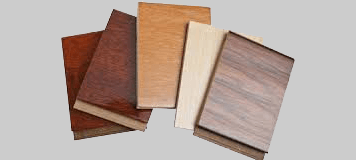Choosing Wood for Your Projects

Two main types of wood are softwood and hardwood. Another popular choice is manufactured wood like plywood. Which type of wood you choose to use for your projects depends upon a variety of factors including: budget and cost, needed strength, hardness, grain characteristics and coloring, stability, weight, durability and availability.
Softwood
Beginning word crafters most often start out using softwood like pine because as it's soft, it's easier to work, plus you don't need expensive tools to get quality results. Pine is readily available at local lumberyards and home centers, note that it does have limitations in furniture making since it is a soft wood and can damage easily.
Softwood comes from a coniferous (cone-bearing) or an evergreen tree. Popular varieties include fir, pine, cedar, spruce, hemlock and redwood. Although these types of woods are used a lot in the home construction industry in flooring and other projects, redwood and cedar are excellent choices for outdoor projects like benches, and pine is used a lot in "Early American Country Style" bench and other furniture projects.
Couple of tips:
- Pine and other softwoods generally absorb and lose moisture more than hardwoods, hence they are not considered as stable.
- Buy your lumber at least two weeks before starting your project and keep it indoors.
- You can usually find softwoods in standard thickness and widths like 1 X 4 at 3/4" thick and 3 1/2" wide, similar to construction materials.
- Note that wood is most often priced per lineal foot, with the price increasing accordingly for wider boards.
Hardwood
Hardwood lumber comes from deciduous trees. Among the main domestic varieties are maple, oak, birch, cherry, ash, walnut and poplar. Poplar and red oak are those commonly stocked in home centers and lumberyards. And stock is generally sold in similar dimensions as it is in softwood, also by the lineal foot. You can call ahead to see what types of wood are available and in what sizes at specialty lumber and construction supply stores.
Working with hardwoods is quite different from working with pine. For example, you cannot drive a screw through hardwood lumber without first boring a pilot hole. Plus cutting as well as planing hardwoods requires very sharp tools.
Hardwoods like ash and oak are known as open-grain woods, with alternating areas of relatively porous and dense wood, and are good to use with furniture crafting. Open-grain areas absorb the color readily when stained, while the harder areas are more resistant. This tends to accentuate the grain patterns and can create a dramatic effect.

 Choosing Wood for Your Projects
Choosing Wood for Your Projects
 Different Types of Hardwood Flooring Explained
Different Types of Hardwood Flooring Explained
 Easy Guide to Hardwood Floors
Easy Guide to Hardwood Floors
 Hardwood Floors - Hot Tips to Save You Money
Hardwood Floors - Hot Tips to Save You Money
 The Beauty of Hardwood Flooring in Your Home
The Beauty of Hardwood Flooring in Your Home
 Wood Manufacturing Sector Laws and Regulations
Wood Manufacturing Sector Laws and Regulations
 Common Methods for Drying Hardwood Lumber
Common Methods for Drying Hardwood Lumber
 What is the Difference Between Hardwood and Softwood?
What is the Difference Between Hardwood and Softwood?

